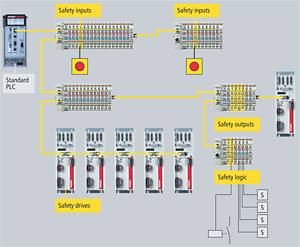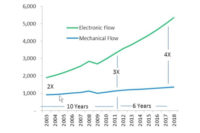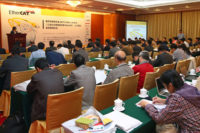
The Safety-over-EtherCAT protocol is referred to as FSCP 12 (Functional Safety Communication Profile) in the IEC 61784-3 specification. This standard defines the fundamental requirements of a communication system in terms of safety-relevant data transmission. It also defines potential errors and describes possible recognition and corrective measures.
The Safety-over-EtherCAT protocol was introduced in 2005 by the EtherCAT Technology Group (ETG) and has been widely used in applications worldwide. The protocol is ideal for applications up to the Safety Integrity Level SIL3 according to IEC 61508. Safety communication and standard communication use a single-bus system.
Usage of Safety-over-EtherCAT, however, is not limited to EtherCAT. By employing the black channel-approach (i.e., the communication system plays no part in the safety considerations), safety quality is independent of the communication channel. Thus, EtherCAT, Ethernet, other fieldbus systems, underlying sub-bus systems and even wireless communication links are allowed on the same wire.
Confirmed by certification from TÜV SÜD, Safety-over-EtherCAT data containers are routed via standard controllers and gateways to neighboring systems where they are interpreted in a safe manner. Therefore, one safety domain can successfully span the entire installation.
“Safety-over-EtherCAT is simple to implement, bus independent and open,” says Dr. Guido Beckmann, who oversees the Safety-over-EtherCAT technology within the ETG. “The acknowledgement of this well-proven safety protocol as an international standard is yet another logical step towards the proliferation of EtherCAT technology. It provides additional assurance to both device manufacturers and end users who can depend on a stable and globally-accepted technology.”
The publication of the international standard IEC 61784-3 Ed.2 is expected soon. EtherCAT is an international standard (IEC, ISO and SEMI).
